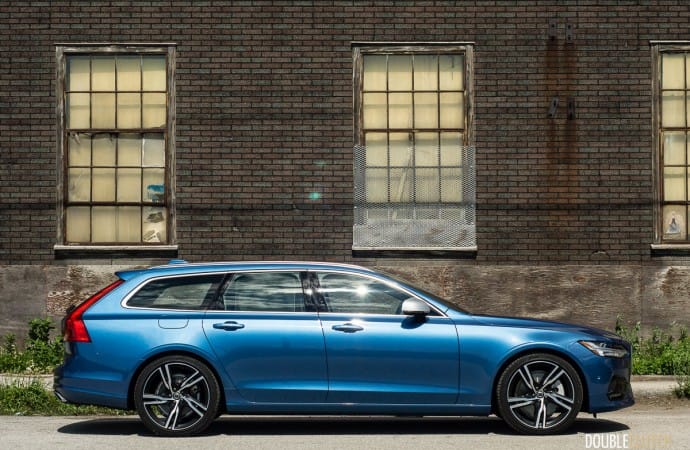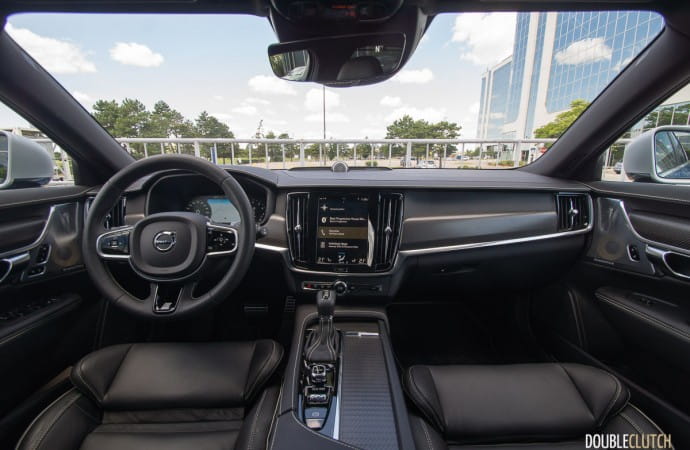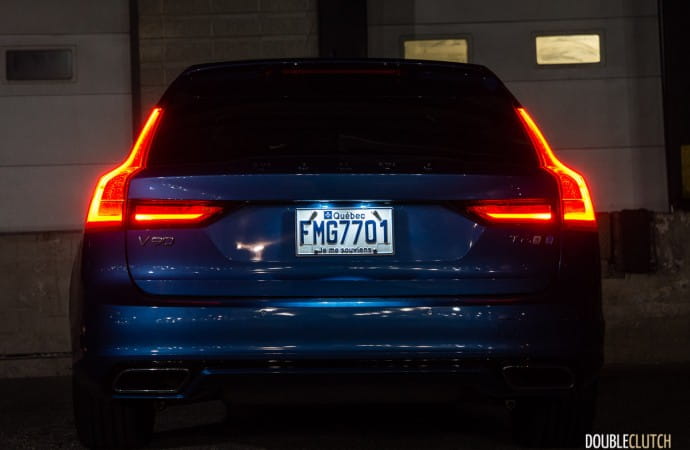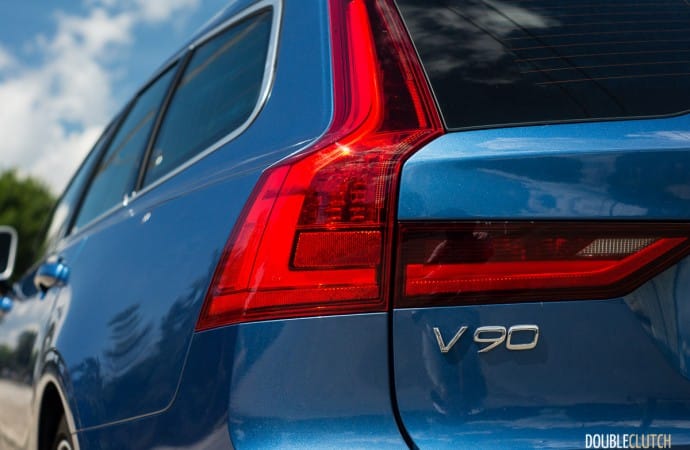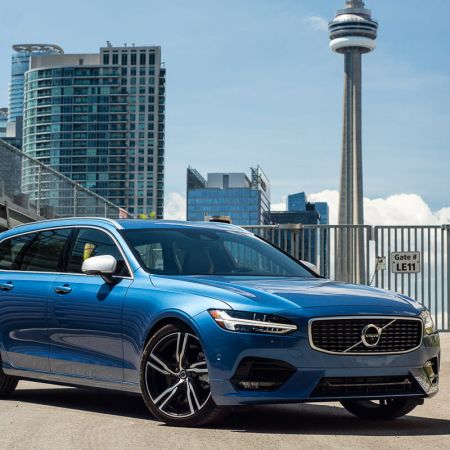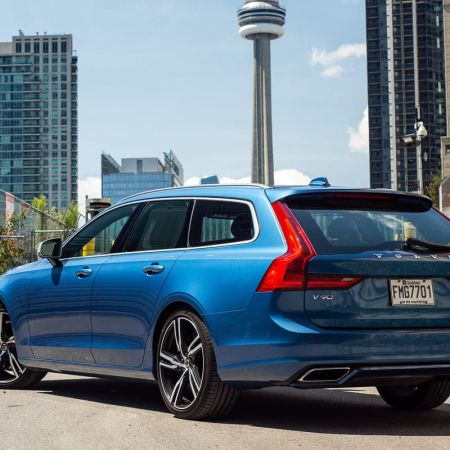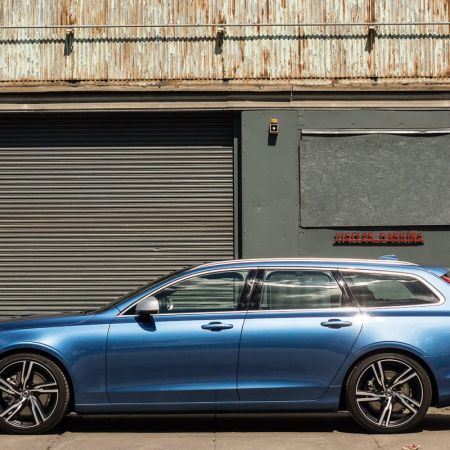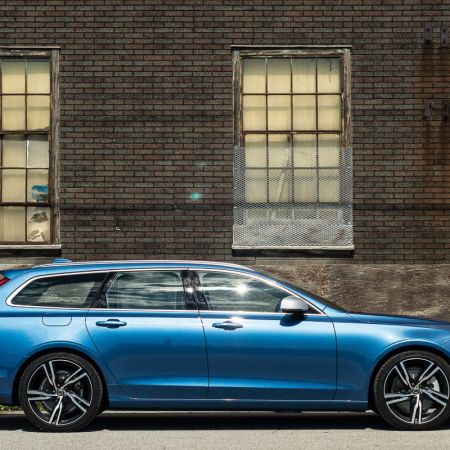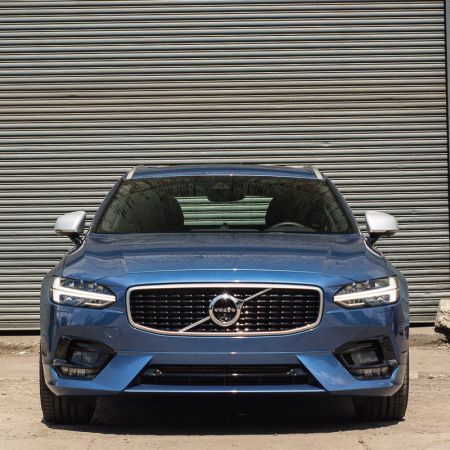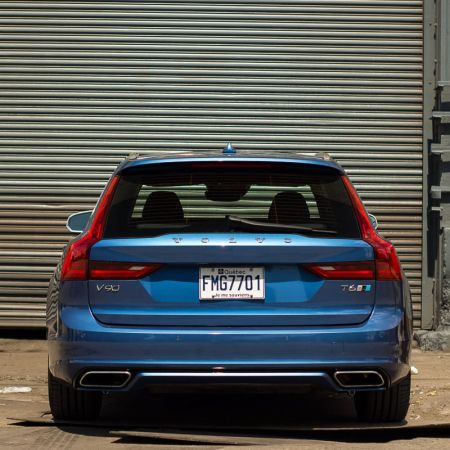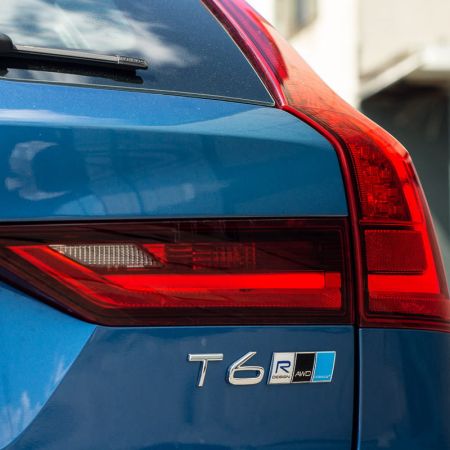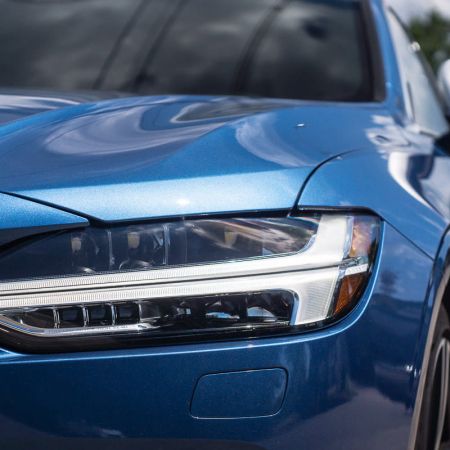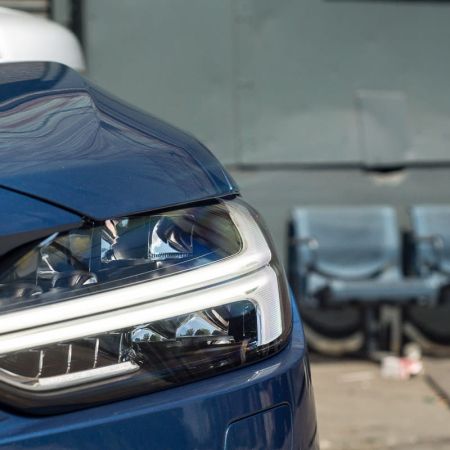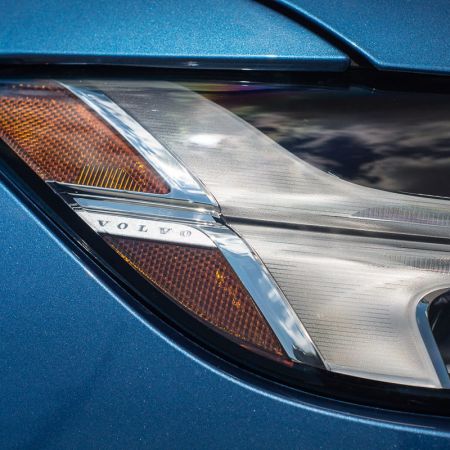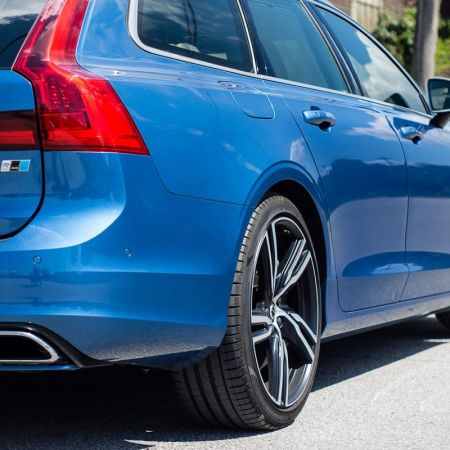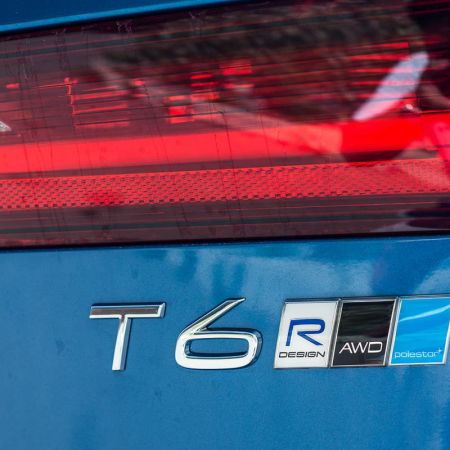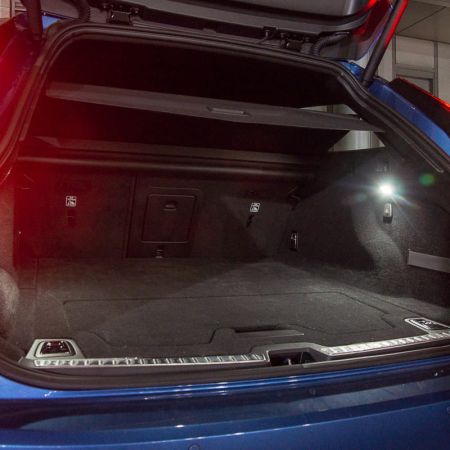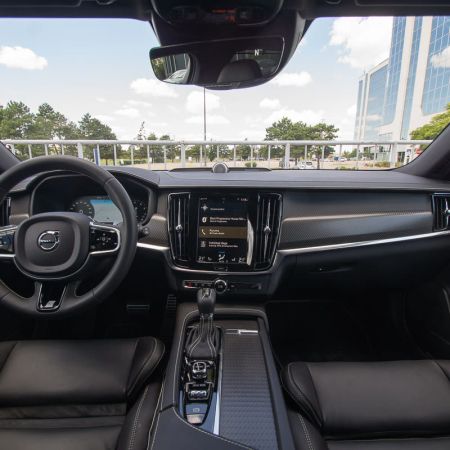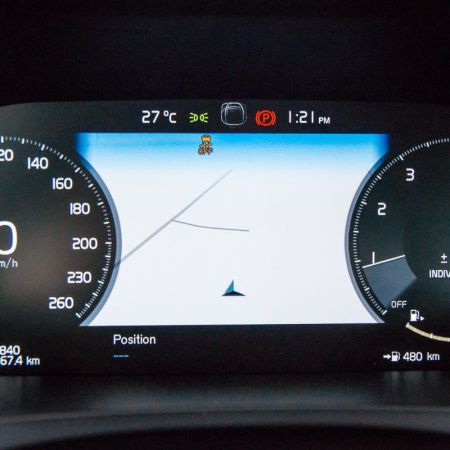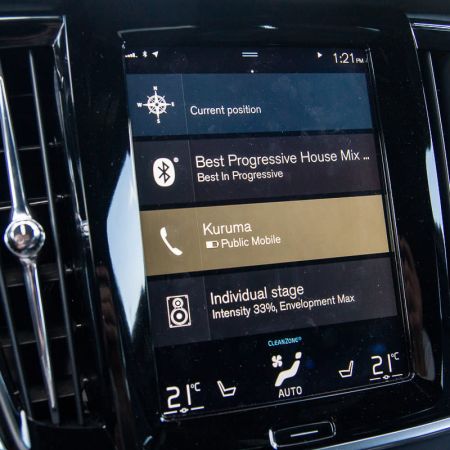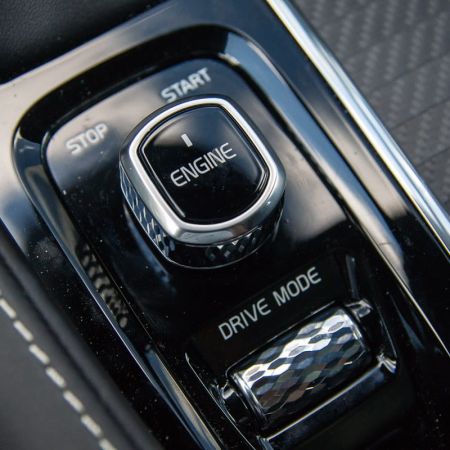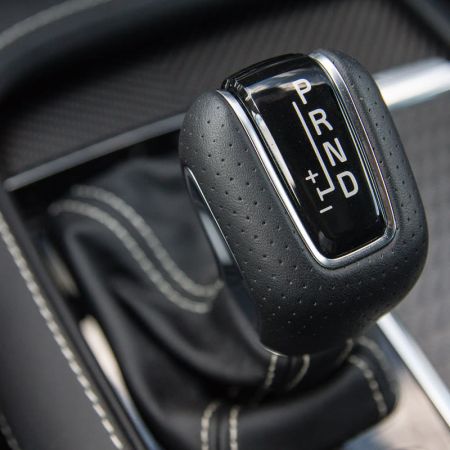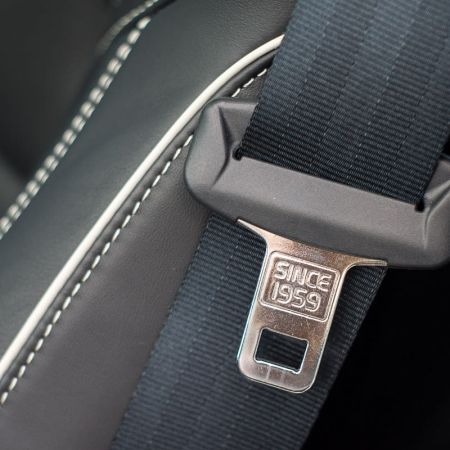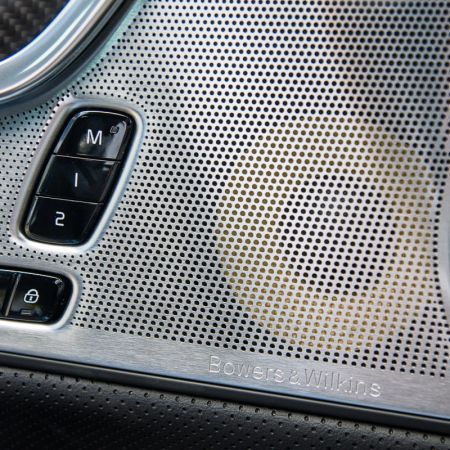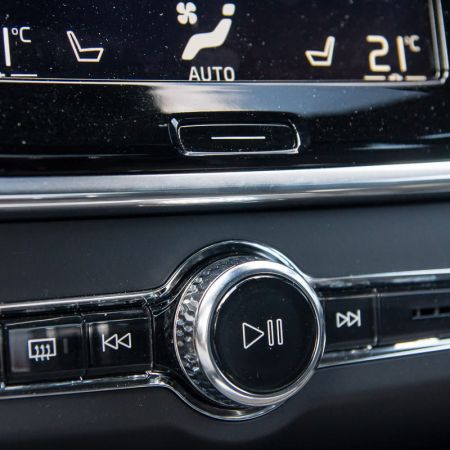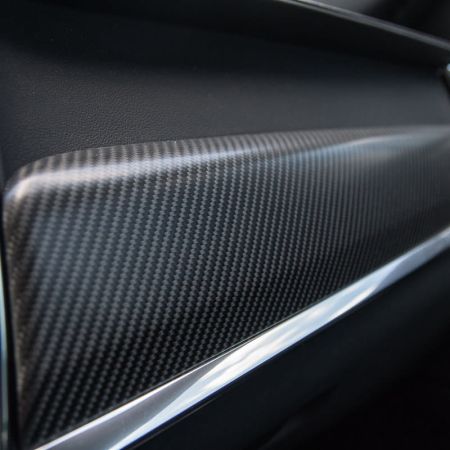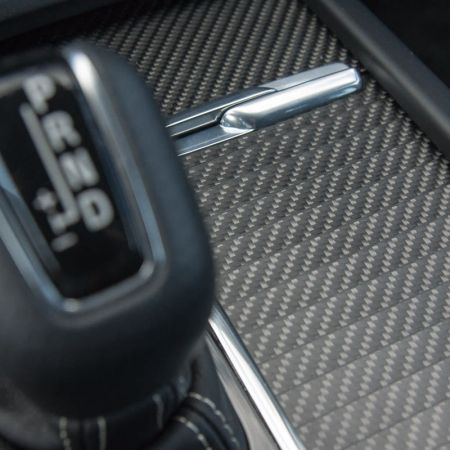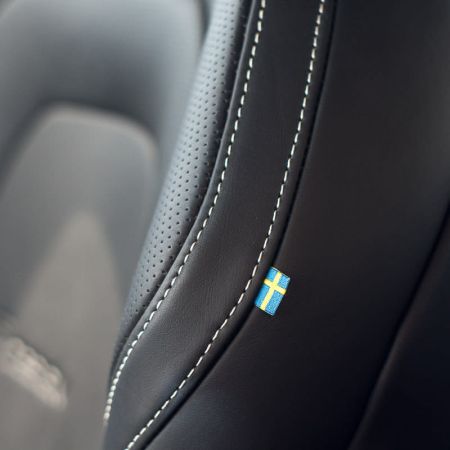Canadian buyers have a much larger affinity to smaller vehicles – specifically wagons. The practical do-everything long-roof solution has been a long-time favourite in the DoubleClutch.ca office as well as with automotive enthusiasts all over. Volvo has been linked to the “uncool” station wagon for decades now. This doesn’t mean they can be blind to prevailing market forces, however. What this means is that luxury crossover SUVs are major money makers, and the demand exists in a big way. The XC90 and XC60 have been staples in the Volvo lineup, and have allowed the brand to re-emerge more eager than ever, also partly from the financial backing of their Chinese parent company: Geely.
Both the XC90 and XC60 are built on a shared architecture (termed SPA – Scalable Product Architecture), which not only simplifies engineering, but also improves Volvo’s ability to design a safe car for passengers. We first saw the Volvo V90 Cross Country (reviewed here) in September of last year, and found it to be a fantastic and legitimate alternative to the de-facto luxury crossover. However, the Cross Country moniker also means it is a jacked-up station wagon with contrasting plastic cladding, in the hopes of fitting into a more rugged lifestyle. The bones of the V90 Cross Country meant that a standard V90 wagon exists, minus the Subaru Outback-style add-ons. Volvo sent us a V90 T6 R-Design for a week-long evaluation. It lives in a part of the market that hasn’t been served very well in recent memory: the luxury wagon market.
Right away, it should be generally accepted that the Volvo V90 wagon (reviewed here) becomes the best-looking wagon of them all. The front-end is essentially borrowed from the S90 sedan, with those signature headlights and Thor’s Hammer daytime-running lights. The R-Design, a performance-focused package sits right in the middle of the V90 family, between the base Momentum, and top-end Inscription. The unique 20-inch wheels (with Pirelli summer tires) and body-coloured trim (front and rear deck spoilers) add to the classically appealing look. The side profile doesn’t change very much – other than the long roof and cargo area over the rear axle. The V90 rear-end is classic Volvo, with high-mount tail lights that wrap onto the centre section of the rear hatch. The rear hatch’s rake isn’t too severe – which improves cargo carrying capacity. This is no Volvo 240 wagon with its completely-vertical rear hatch, but for today’s standards, the V90 is pretty good.
Inside the V90, anybody who is familiar with Volvo’s current crop of gorgeous interiors will feel right at home. It is bright, airy, with a multitude of differing materials, all with impeccable assembly quality, and some of the best seats in the business. The R-Design switches out the finished or open-pore wood trim for some convincing-looking carbon fibre pieces. A large 12.3-inch touchscreen is front and centre, with most controls residing within. I am always one to prefer hard buttons, but Volvo’s touch-intensive interface works quite well. It is fast enough – though it is noticeably sluggish before the operating system has a chance to fully load all of its features and services upon startup. Interior space is excellent for all occupants, and the fact that the V90 wagon shares a similar wheelbase to the recently-extended S90 sedan, means that second-row legroom is absolutely fantastic. Cargo capacity is quoted at 723L; in other words, enough for absolutely everything.
One common directive behind the SPA platform is that all engines would contain four cylinders. In the case of the V90, the single engine choice is the T6. In Volvo’s world, that means a 2.0L four-cylinder gasoline engine, with direct fuel injection, a turbocharger, and a supercharger. We’ve become fairly familiar with this engine, and aside from the slightly gruff sounds it produces, the real-world power delivery is impressive, considering the forced-induction complexity. It produces 316 horsepower at 5700rpm, and 295lb-ft of torque from 2200-5400rpm. Power is sent through an eight-speed automatic gearbox, provided by Aisin, a long-time Volvo partner. All V90s sold in Canada send their power to all four wheels – American V90 shoppers have the option of a less-powerful T5 engine, good for 250 horsepower, as well as front-wheel drive. There is, however, one catch that makes for a good talking point between the two markets – more on this later.
For those looking for that extra impact over what Volvo’s engineers give you out of the box, you can opt for Polestar’s optimization package. For an additional $1,400, you get a more aggressive program for the engine and transmission, more sensitive throttle response, and more horsepower (330hp) and torque (325lb-ft), all while retaining your warranty, emissions performance, and even fuel efficiency. These optimizations are installed and supported at your local Volvo dealer.
Volvo’s Drive-E powertrains were conceived to deliver six and even eight-cylinder power, with improved fuel efficiency. Volvo Canada rates the V90 T6 at 10.8L/100km in the city, 7.6L/100km on the highway, and 9.4L/100km in a combined cycle. I ended up with an indicated average of 10.7L/100km during my week of mixed city and highway driving. The V90 will hold 60L of premium 91 octane fuel. All of Volvo’s products with the Drive-E powertrain come equipped with an idle start-stop system, as well. The SPA platform makes it possible for Volvo to add plug-in electrification to just about every product they currently make – a plug-in T8 version of the V90 would be supremely delicious.
The base Volvo V90 T6 starts at just under $60,000, before taxes and additional fees. Even then, it is quite well equipped – with leather seating surfaces, panoramic sunroof, the excellent LED headlights, and Volvo’s entire alphabet soup of active and passive safety functions. Stepping up into the R-Design $64,450) gets you the body-coloured exterior trim, sport suspension, sport seats, Apple CarPlay and Android Auto, the snazzy full-LCD instrument cluster, a leather-wrapped key, among other items. The fully-loaded Inscription ($66,050) drops some of the sporting features, and adds goodies such as ventilated seats, gorgeous open-pore walnut trim, Inscription-specific trim, and different wheels. My particular R-Design tester came equipped with the $2,000 Vision Package (power side mirrors, auto-dimming mirrors, blind spot monitoring, 360-degree camera), the $2,300 Climate Package with Graphical Head-Up display (also adds heated rear seats, heated steering wheel, and heated washer nozzles), and the $3,000 Leather Package, and the $900 Bursting Blue Metallic paint. This brings the as-tested price to $79,275.
The most interesting thing about the V90 isn’t the wagon body shape. If you’re expecting the V90 to be a more practical S90, you’d be right. The biggest talking point behind the V90 is that it isn’t readily available, south of the border. The Americans have a serious disdain for the wagon, so Volvo makes the jacked-up V90 Cross Country the only 90-series wagon available in dealer showrooms. The V90 exists, but for an American customer looking for a non-Cross Country wagon, you’ll need to submit a special order through your dealer. In contrast, the Canadian market makes the V90 available, without having to jump through any hoops.
Wagons are nowadays in the domain of the European automakers. Audi no longer offers an A6 Avant on this side of the ocean. The Mercedes-Benz E400 wagon is a close competitor, with smooth V6 power and its own unique sense of style, in the most German of ways. The V90 R-Design still wins in terms of road presence and styling, however. On my way home from work, I had a man in a Dodge SRT Charger Hellcat pull up alongside, flash me a huge thumbs-up, and then take off into the distance. If a Swedish station wagon has the ability to be in the same level of “cool” that a SRT Hellcat is, then we can still have some hope that real wagons like the Volvo V90 can hold its own during the crossover onslaught.

